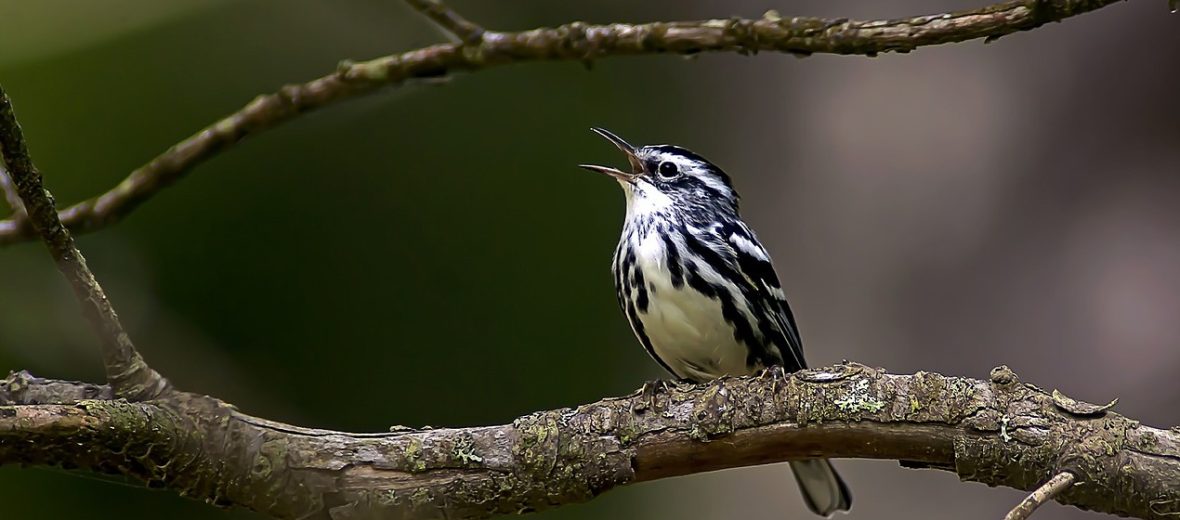
The black and white warbler can be found throughout central and eastern Canada, central and eastern United States, Mexico, Central America, South America, and the Caribbean Islands. These birds prefer mixed forests, deciduous forests, and swamp forests, in their breeding habitats. During their migration, they can be found in riparian habitats. While wintering, they can be found in mangrove forests, dry forests, wet forests, and cloud forest habitats, and also gardens & coffee plantations. With a widespread population of an estimated 18,000,000 wild individuals, these birds are listed as Least Concern by the IUCN.
First the Stats…
Scientific name: Mniotilta varia
Weight: Up to .38 ounce
Length: Up to 5.1 inches
Wingspan: Up to 8.7 inches
Lifespan: Up to 11 years
Now on to the Facts!
1.) Their primary threat is that of climate change, which can bring about severe weather conditions. They also suffer from habitat loss and fragmentation.
2.) A group of warblers is called a distinction, dichotomy, or integration.
3.) These birds are typically solitary but will form pair bonds. However, during their migration, they can sometimes be found in flocks of other bird species.
4.) The call of a black and white warbler is that of “wee-see”. It is typically repeated up to 6 times, in a row. While in flight though, they produce either a “seet-seet” or a “chip” call.
5.) These insectivores (eat insects and other arthropods) feast on various ants, beetles, and spiders. However, their favorite food is lepidopteran larvae (larvae of moths and butterflies).
But wait, there’s more on the black and white warbler!
6.) Once a pair bond is formed, these birds are monogamous (mate for life).
7.) Females produce up to 5 eggs that hatch in up to 12 days.
Did you know…?
The black and white warbler is the only known warbler species that locates the bulk of their prey beneath the tree bark’s surface.
8.) The male is territorial and spends a decent amount of time, each day, defending his territory and chasing competitors and others away from his and his partner’s chicks.
9.) The nest is constructed on the ground amongst bushes and roots.
10.) Chicks fledge in up to 12 days and are independent in up to 3 weeks.
But wait, there’s still more on the black and white warbler!
11.) Black and white warblers are sometimes confused with the blackpoll warbler. But the blackpoll warbler has a solid black cap.
12.) There have been black and white warblers found in Faeroes, Iceland, Ireland, and the UK.
13.) These warblers are among the first to arrive during the spring.
14.) These critters are diurnal (active during the day).
15.) Squirrels, chipmunks, raccoons, and domestic cats all prey on these warblers. And since their nests are situated on the ground, they can be easy targets.
Now a Short Black and White Warbler Video!
Be sure to share & comment below! Also, check out the Critter Science YouTube channel. Videos added regularly!
Want to suggest a critter for me to write about? Let me know here.



